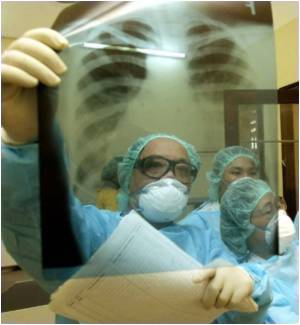Doctors are debating the best treatment approach for patients with certain stages of non-small cell lung cancer (NSCLC), which accounts for about 80 percent of all lung cancers.

The research, led by Charu Aggarwal, M.D., M.P.H., Walter Scott, M.D., F.A.C.S., and George Simon, M.D., will be presented at the 46th Annual Meeting of the American Society of Clinical Oncology on Sunday June 6.
Stage IIIA presents challenges because patients classified at that level are such a diverse group. The common denominator is that cancer has spread to lymph nodes on the same side of the chest as the primary tumor, but beyond that, stage IIIA patients may have tumors of any size and may differ in the number and location of affected lymph nodes.
"In the past, patients with advanced stage lung cancer were treated either with surgery alone, chemotherapy alone, or radiation alone," says Aggarwal. "Scientists and clinicians found that adding radiation to chemotherapy improved survival, so concurrent chemotherapy and radiation together became the standard of care." Recent large, Phase III clinical trials showed that patients treated with chemoradiation followed by surgery were more likely to be disease-free than counterparts who received chemoradiation without surgery set the stage for Aggarwal's study.
Looking at data from 249 patients treated at Fox Chase for stage IIIA non-small cell lung cancer from 2000 through 2008, the research team divided patients into three groups based on the treatments they received: chemoradiation only, chemoradiation plus surgical removal of a lung (pneumonectomy), or chemoradiation plus surgical removal of only one lobe of the lung (lobectomy).
Biostatistician Brian Egleston, Ph.D., used a technique called propensity score analysis to balance the three groups in terms of age, gender, smoking status, physical condition, and other variables that could bias the results.
Advertisement
Removing the entire lung, a more extensive procedure that poses a greater risk of post-operative complications, offered no additional survival benefit." This tells us that you don't have to put the patient through pneumonectomy; you might get superior outcomes with a smaller, safer operation," says Aggarwal, who received an ASCO Foundation Merit Award for this research.
Advertisement
Source-Eurekalert
RAS















